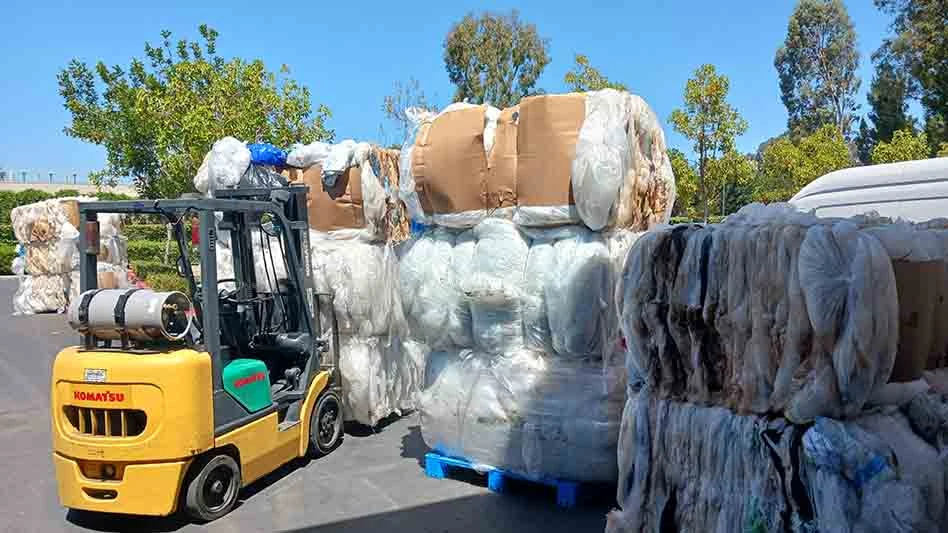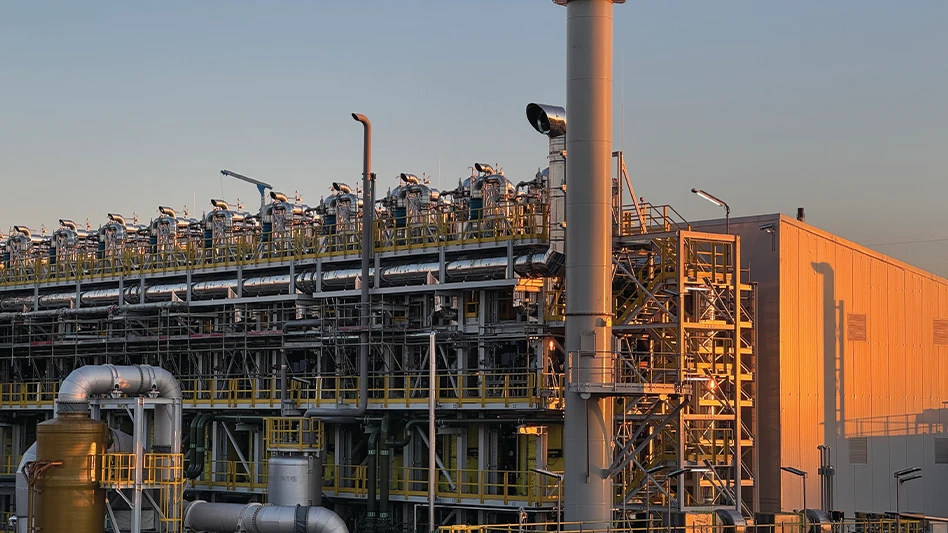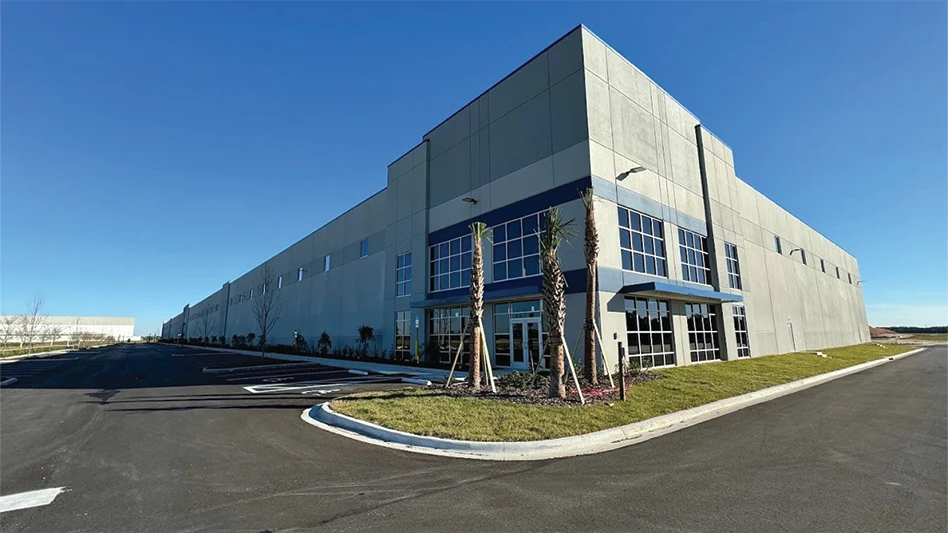Mason Brown is almost certainly being modest when he says, "We are successful here in Dallas because of timing and luck."
Mason is founder and president of Big City Crushed Concrete, a family business that operates three concrete crushing facilities in or near Dallas. Mason’s son Trey is also a corporate officer, as is Mason’s son-in-law Mike Richard.
Luck and timing can play a part in any business’ success. But, as the Big City Crushed Concrete story demonstrates, it takes good management to capitalize on the opportunities provided by timing and luck.
BUYING IN AT THE RIGHT TIME
It has become popular in the ‘90s to position a business as a "solution provider" or as a "problem-solving partner." Some companies are able to live up to this billing while others are left with a slogan that is eventually put into mothballs.
Big City Crushed Concrete may never have used one of these catchy slogans, but it is a case where it would have been appropriate. "We started in 1988," says Mason. "We bought an existing operation that had been started by an excavation contractor who saw that he was beginning to have trouble disposing of concrete."
Having spent over 30 years working for a major general contractor, Mason did not enter into his new venture as a novice. But initially, the new venture consisted of just a small jaw crusher with a secondary cone crusher that had not yet been put into full operation by the owner.
Mason Brown correctly surmised, though, that the excavating company owner was not the only contractor in the Dallas area having the same concrete disposal problem. "We bought that facility and started the company at a time when concrete rubble had been dumped for years in old gravel pits," Mason explains. "Beginning in 1988, those pits started to fill up very rapidly. In subsequent years, you had an increase in the volume of rubble being made and a decrease in the number of pits and dumps that could be used."
All signs pointed to concrete debris becoming increasingly costly to dispose of in the Dallas area, a forecast that did come true. "The dumps that are available are located further out, which makes the transportation costs higher," Mason says of today’s market conditions. "They are also beginning to charge tipping fees on concrete as high as $300 per trailer load."
OFFERING A BETTER OPTION
The circumstances were right for concrete recycling to make economic sense in Dallas, and Big City Crushed Concrete took advantage of the opportunity to provide a cost-effective option to area contractors.
Studying the geography and transportation patterns of Dallas construction and demolition projects has been a key in Big City’s planning strategy. "We try to locate our plants between the source of the concrete rubble and where it has to be disposed of," says Mason.
The gravel pits and other areas that are used as landfills for C&D debris are now typically located well outside the Dallas city limits. Construction and demolition projects, of course, can be located all over the map, making the siting process Mason refers to a difficult one. But the company has found two sites in Dallas and one in Arlington to work from, and has added a mobile weapon to its arsenal.
"We have a portable plant that we’re doing mobile projects with," says Mason. The mobile plant has been used for several high-profile, large-volume projects, such as at the new arena being constructed in downtown Dallas and for runway projects at the Dallas-Fort Worth airport.
The arena project offers an example of how Big City provides an affordable option for the contractors involved. "From the concrete disposal standpoint, we are closer than the available disposal facilities, and we also do not charge tipping fees, provided the material is relatively free of dirt or trash and is under four feet in two dimensions."
The company will charge to break up larger pieces. "If we get some material that is oversized, we will break it," says Mason. "Sometimes we’ve had people bring in double-Ts from parking garage decks. We will charge to break that up, but we can process it."
When it comes to end markets, Mason says Big City Crushed Concrete has not recently had to worry about a shortage of demand for its products. The company "has to limit the amount of products we make, otherwise we’d run the risk of not becoming a reliable source of supply," he notes.
"We primarily make Tex-DOT (Texas Department of Transportation) grade one flexible road base," says Mason. "We also make some 1-1/2-inch to ¾-inch and 1-1/2-inch to 3-inch screened aggregate." He says of the screened product, "we screen them out to keep the gradation in spec, and they are essentially a byproduct that probably makes up less than 20% of our production."
Among those buying Big City’s road base material are "contractors, private clients like wrecking yards and truck yards, people laying down driveways, municipalities, cities, counties, and farmers putting down farm roads," says Mason. The smaller-sized screened material is commonly used as free-draining fill for septic tanks or retaining walls, while the larger 1-1/2-inch to 3-inch product can be used for roads that host heavy equipment at construction sites and landfills.
He expects and receives no quality complaints about his products. "In terms of the base, it’s equal to or better than the material from the quarries. With the screened material, you’re providing a material that is of equal grade for a lesser cost," he says.
In addition to quality, Mike Richard sees service as crucial to Big City’s success. "The key to our business is customer service," says Mike. "We have the ability to serve most of our customers in a very expedient manner, and we can do it at an affordable price. We can deliver same day, whereas a quarry might need a day or two."
Mason also sees an element of "doing well while doing good" to the concrete crushing business. "The benefit of saving landfill space is obvious. We also reduce the trip lengths involved to haul material, thus reducing air pollution and traffic congestion, as well as tire wear and tear. We have all of our quality permits for dust control. We are able to completely control dust problems; we figured out a way to introduce water into the system that pretty much stifles the dust. Some dust kicks up from the trucks, but we do keep the roads swept and watered."
GROWING ALONG WITH THE INDUSTRY
When Mason Brown points to timing and luck, he can point to several aspects of both, including the steady climb in concrete recycling that has taken place in the decade of the ‘90s.
In the Dallas market, Big City has been helped not only by the further landfill distance, but by the booming nature of the Sun Belt Dallas economy. "The flow of incoming material has steadily increased for us," says Mike Richard. "There have been a lot of highway projects around here, and a number of building projects," he adds.
The material supply side has also been helped by the aging of structures and roadways built during the post-World War II building boom. "I think from a disposal standpoint, we’ve seen a tremendous growth in this business the last ten years," says Mason. "The concrete that was poured in the 1940s and ‘50s is reaching the end of its useful life. There is a lot being torn out at the same time the places to dispose of it have been reduced and the cost to dispose it has increased."
Big City Crushed Concrete has grown without making a big splash, according to Mason. "Generally, we don’t seek much publicity," he says. "We do very little advertising."
The company has also never perceived itself, or concrete crushing in general, as a genuine threat to the primary aggregates industry. "The reason is that even though we’re big in terms of recycling—compared to things like tires or paper we do a significant amount of tonnage and keep a significant amount out of the landfills—we can’t take away a large part of their market. If you took all concrete and rubble and recycled it, you might be looking at 5% of what is needed in the construction industry," Mason estimates. [There are others in the industry who feel that estimate may be a bit low.]
But Mason is confident that to the extent that it can, concrete crushing will continue to gain competitive advantages within the aggregates marketplace. "I think the industry is going to continue to grow, because landfill space is going to become more scarce and expensive," he says. "The demand to increase the amount of material that is recycled is going to grow."
He is cautious, though, that the rate of growth as a year-against-year percentage is bound to slow down. "If you look at concrete production over the years, you don’t have the big jumps you used to have. You’ll see the amount increase, but not the percentage increases you used to see," Mason predicts.
Mike Richard believes the company can be pleased with what it has accomplished, and that Big City Crushed Concrete may have grown to just about the right size. "We have the three facilities plus the portable equipment. I don’t know that we would want to get much bigger than that," says Mike.
While the company may not grow to national proportions, it has nonetheless established itself as a benchmark company within tthe industry. "We get visitors on a fairly regular basis curious about how we do it, and they bring that knowledge back with them to start up," says Mike.
With a lot of good management and a little bit of luck, Big City Crushed Concrete has met the expectations of its founding family members. "We never dreamed there would be this much concrete rubble to crush," says Mason. "But we’re glad to be involved in this business. Things have really developed well—probably beyond expectations." C&D
The author is the editor of C&D Recycler.
Get curated news on YOUR industry.
Enter your email to receive our newsletters.

Explore the August 2001 Issue
Check out more from this issue and find your next story to read.
Latest from Recycling Today
- Arizona AG says consumers were misled over recycling bags
- PRE warns European plastic recycling industry facing ‘imminent collapse’
- NWRA, Informa partner to launch Waste Leadership Summit
- Circular Action Alliance appoints new executive director in California
- Aduro reports fourth-quarter, FY25 results
- EverestLabs announces first international deployment
- Sunnyvale, California, awards contract to BHS
- Scrap Expo session preview: Technology Spotlight—Refining Recovered Metal






